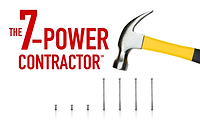Al Levi: 5 ways to get the most out of trade shows

It can be incredibly difficult as a contractor to pull yourself away from work to attend trade shows and conventions. Even if you know it’s important to go, you also know there is a never-ending list of things you must do at work.
I advocate that no matter how busy you are, the best thing to do is to attend the right trade shows and the right industry conventions. There rarely is a better use of your time.
But if you’re going to attend, you have to have a plan to maximize your time and effort.
So, here are some tips I’ve used myself as a contractor and that I’ve shared with clients through the years.
Plan ahead
Every January, plot out which trade shows and conventions you’ll attend. There are bound to be these types of events that broaden your perspective, teach you something new and get you in front of the key vendors you need to talk to (or to the classes you need to attend).
Since there are tons of them, exclude those not worthy of your time, energy and money. Choose wisely.
You’ll want to strike a balance between just attending technical classes that do make you better at your trade but don’t make you any better as a business person. Expand your horizons and stretch yourself by taking the business classes that are often available at these types of shows.
Most of us, myself included, were not born business people — we were born to be contractors. While being good at the trade we do is very important, it isn’t enough to ensure we will have a highly profitable and properly functioning business.
One more thing about planning what shows and conventions to attend. It’s easy to commit to too many of them, and then you risk tipping the scales away from never being able to leave your business to not being around enough. Again, choose wisely.
Bring a buddy
Try to go with someone else from your own team. That’s because there’s a lot of information coming at you in a short amount of time, and it can be hard to remember what was said and by whom.
If there are two or more of you, you can stay together and talk about it later on and commit to creating summary notes. Or, you can split up if multiple classes are being offered at the same time and each write up a short summary that you debrief together.
Understand there are perceived politics at your company when it comes to who goes and who has to stay behind, so make sure you’re proactive about addressing this.
Your decision on who attends will require you plan well in advance when it comes to coverage at the business. Sometimes, a rotational schedule for attending can be helpful if you have enough depth of staff to permit this.
There is a cost for having multiple people attend, but I wholeheartedly believe there is a much greater benefit to bringing staff to these types of events with you. There’s a great source of pride instilled in them by being selected to attend, and it helps to have someone from the team to bounce ideas off as you’re attending, or after you get home. It also helps that someone besides you from the company comes to the event because, as owners, we can attend and get inspired, but when we get back to the company, the staff is disconnected from that inspiration. But when team members attend, too, you have allies.
Come with questions
Create your top 25 questions and concerns that you want to address while you’re attending. Put them in writing or on your tablet so you can easily access them. Then, prioritize the questions because sometimes it’s not possible to address all 25. My suggestion is to get your top 25 down to a list of top 10 “must get answered” questions.
How do you prioritize the list? Start by sorting the list of questions into “have to know” and “like to know.” The other way I teach to sort lists by priority is by asking yourself, “What will either solve my biggest problem and challenge or give me the greatest chance to grow and be more profitable?” Getting the answer to these key questions always makes a top 10 list.
Find the right people
Before attending any event for the first time, try to see if there’s someone who is in the “inner circle” you already know who will be attending so you can ask them to give you the introductions to the “right” people you should be meeting — and help you know ahead of time which people you want to be avoiding.
Grabbing the floor plan, looking at what seminars and classes are being offered and perusing the schedule will help you create a game plan that will maximize your time at the convention.
Know that hanging with the right people doesn’t always mean time on the floor. It can mean having breakfast, lunch or dinner and even a drink at the bar together. This is where a lot of good exchange of information about what’s working and what’s not working for others can be helpful to you.
Follow up
Follow up with the key contacts you made by email and/or a quick call within two weeks so you can leverage what you did when you were together. This will hopefully put a face to who you are so the relationship is deeper than a cold email or a cold call.
Do this and you’ll be well on your way to maximizing your time at industry trade shows and conventions.
Looking for a reprint of this article?
From high-res PDFs to custom plaques, order your copy today!










